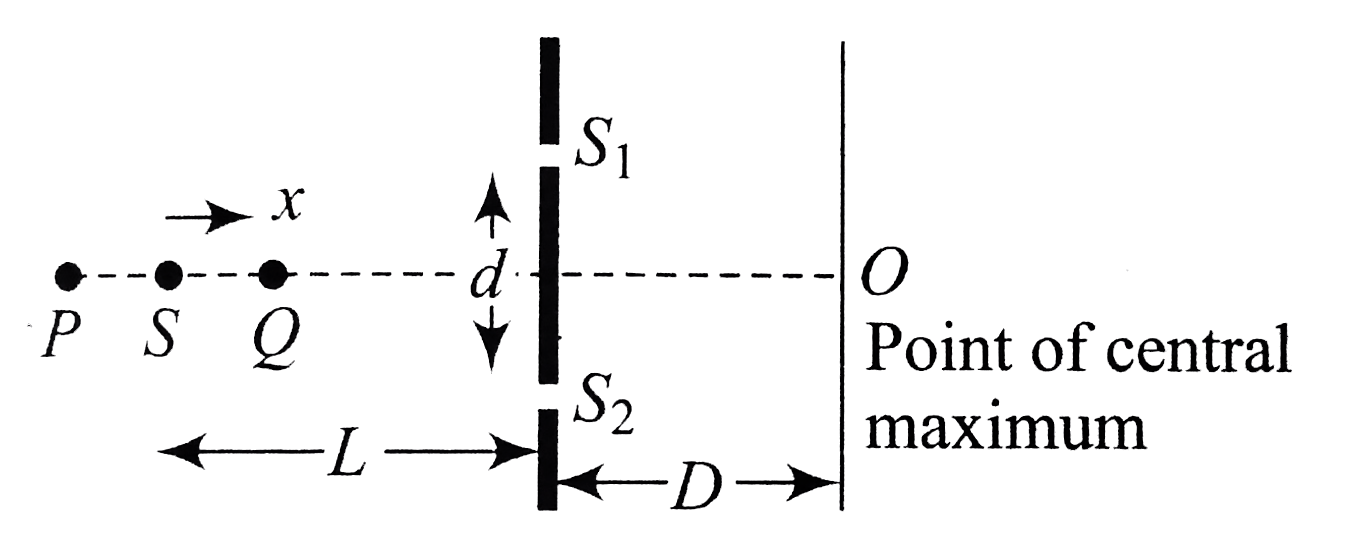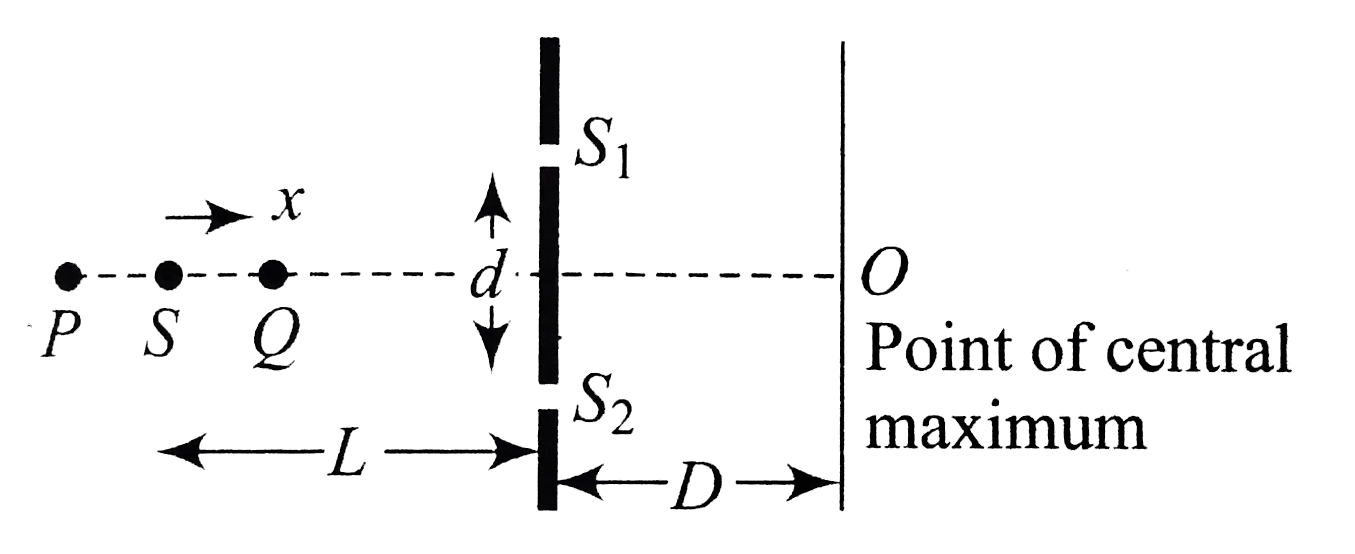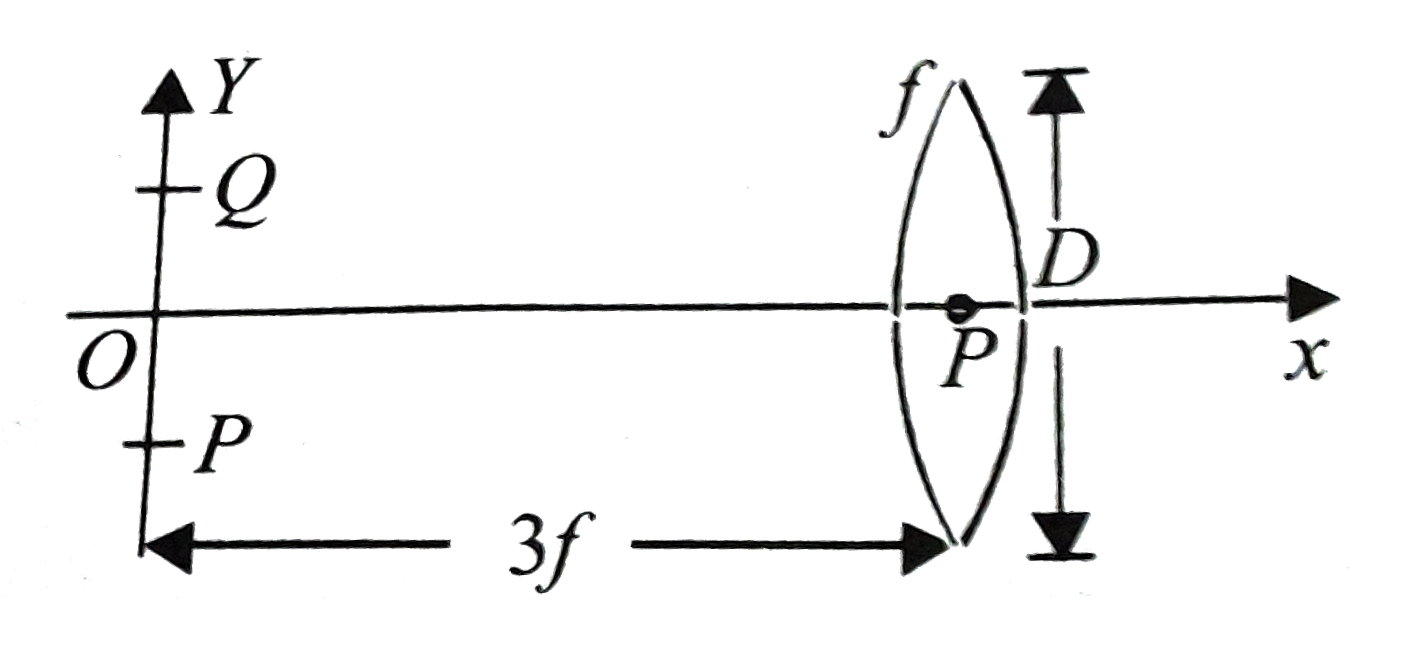In YDSE set up (see fig.), the light sources executes SHM between P and Q according to the equation x=Asinωt, S being the mean position. Assume d→0 and A<<L. ω is small enough to neglect Doppler effect. If the sources were stationary at S, intenstiy at O would be I0
Read the paragraph carefully and answer the following questions.

When the source comes toward the point Q,
the bright fringe will be less bright.
the dark fringe will no longer remain dark
the fringe width will increase
none of these
The correct Answer is:d
Intensity of the fringes will increase.
Topper's Solved these Questions
- BOOK - CENGAGE PHYSICSCHAPTER - WAVE OPTICSEXERCISE - Integer3videos
WAVE OPTICS
- BOOK - CENGAGE PHYSICSCHAPTER - WAVE OPTICSEXERCISE - Archives4videos
WAVE OPTICS
- BOOK - CENGAGE PHYSICSCHAPTER - WAVE OPTICSEXERCISE - Assertion- Reasoning13videos
WAVE OPTICS
- BOOK - CENGAGE PHYSICSCHAPTER - THERMODYNAMICSEXERCISE - QUESTION BANK34videos
THERMODYNAMICS
- BOOK - CENGAGE PHYSICSCHAPTER - WAVESEXERCISE - QUESTION BANK38videos
WAVES
Similar Questions
Knowledge Check
- Question 1 - Select One
In YDSE set up (see fig.), the light sources executes SHM between P and Q according to the equation x=Asinωt, S being the mean position. Assume d→0 and A<<L. ω is small enough to neglect Doppler effect. If the sources were stationary at S, intenstiy at O would be I0
Read the paragraph carefully and answer the following questions.

The fringe width β can be expressed asAβ=β0sinωtBβ=β0cosωtCβ=β0sin2ωtDnone of these - Question 2 - Select One
In YDSE set up (see fig.), the light sources executes SHM between P and Q according to the equation x=Asinωt, S being the mean position. Assume d→0 and A<<L. ω is small enough to neglect Doppler effect. If the sources were stationary at S, intenstiy at O would be I0
Read the paragraph carefully and answer the following questions.

The fractional change in intensity of the central maximum as function of time isAAsinωtLB2AsinωtLC3AsinωtLD4AsinωtL - Question 3 - Select One
An object kept near a convex lens of focal length f, executes SHM between P and Q according to the equation y=Asinωt, O being the mean position. Take x-axis as the principal axis of the lens and A<<D to answer the following questions:

Q. The amplitude of oscillation of the image isAAB2ACA/2DImage does not oscillate
An object kept near a convex lens of focal length f, executes SHM between P and Q according to the equation y=Asinωt, O being the mean position. Take x-axis as the principal axis of the lens and A<<D to answer the following questions:

Q. The phase difference between the object and the image oscillations isView SolutionA particle is executing SHM according to the equation x=Acosωt. Average speed of the particle during the interval 0≤t≤π6ω is
View SolutionAn object kept near a convex lens of focal length f, executes SHM between P and Q according to the equation y=Asinωt, O being the mean position. Take x-axis as the principal axis of the lens and A<<D to answer the following questions:

Q. The velocity of the image when the object crosses the mean position and goes toward Q isView SolutionA particle is executing SHM according to the equation x=Acosωt. Average speed of the particle during the interval 0←t←π6ω
View SolutionThe SHM of a particle is given by the equation x=2sinωt+4cosωt. Its amplitude of oscillation is
View Solution
